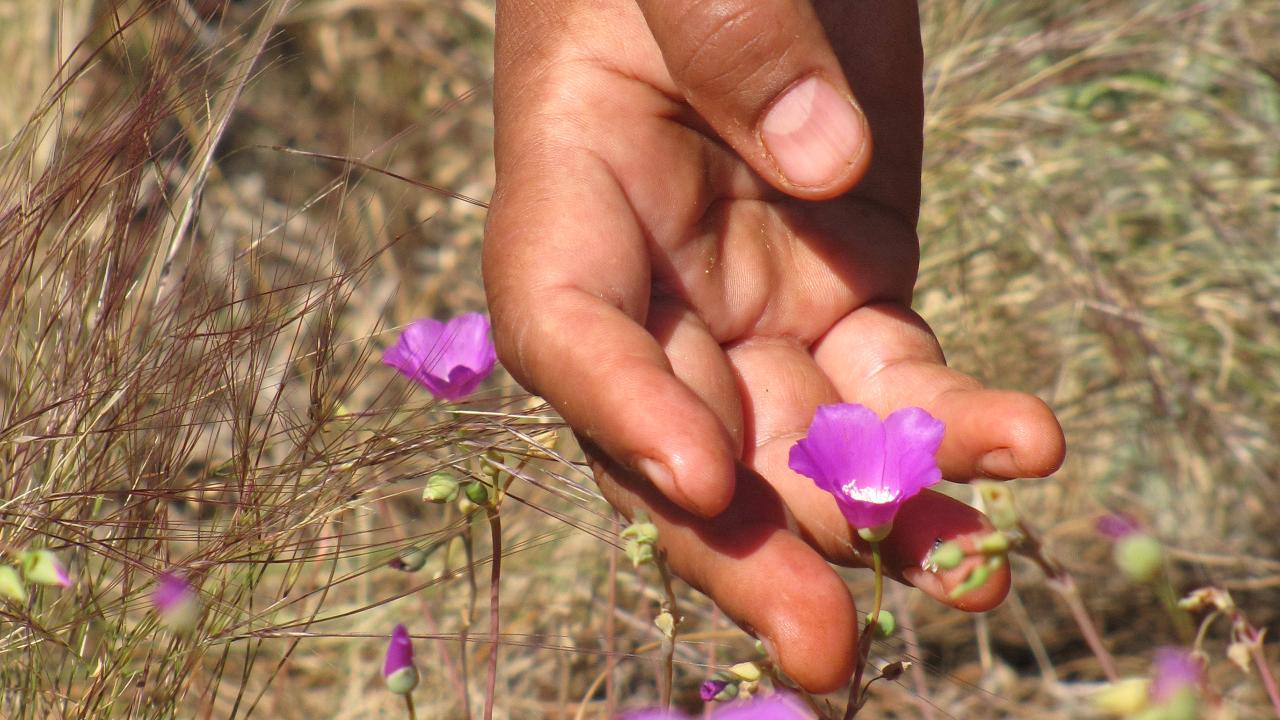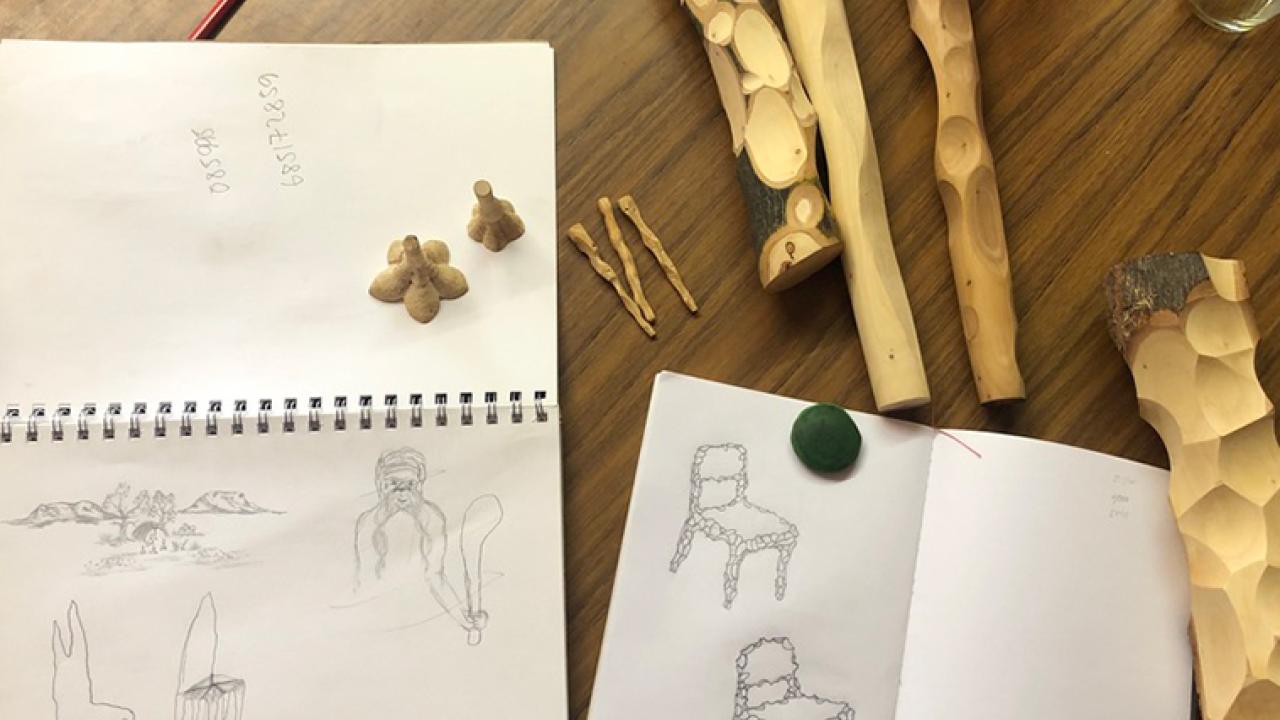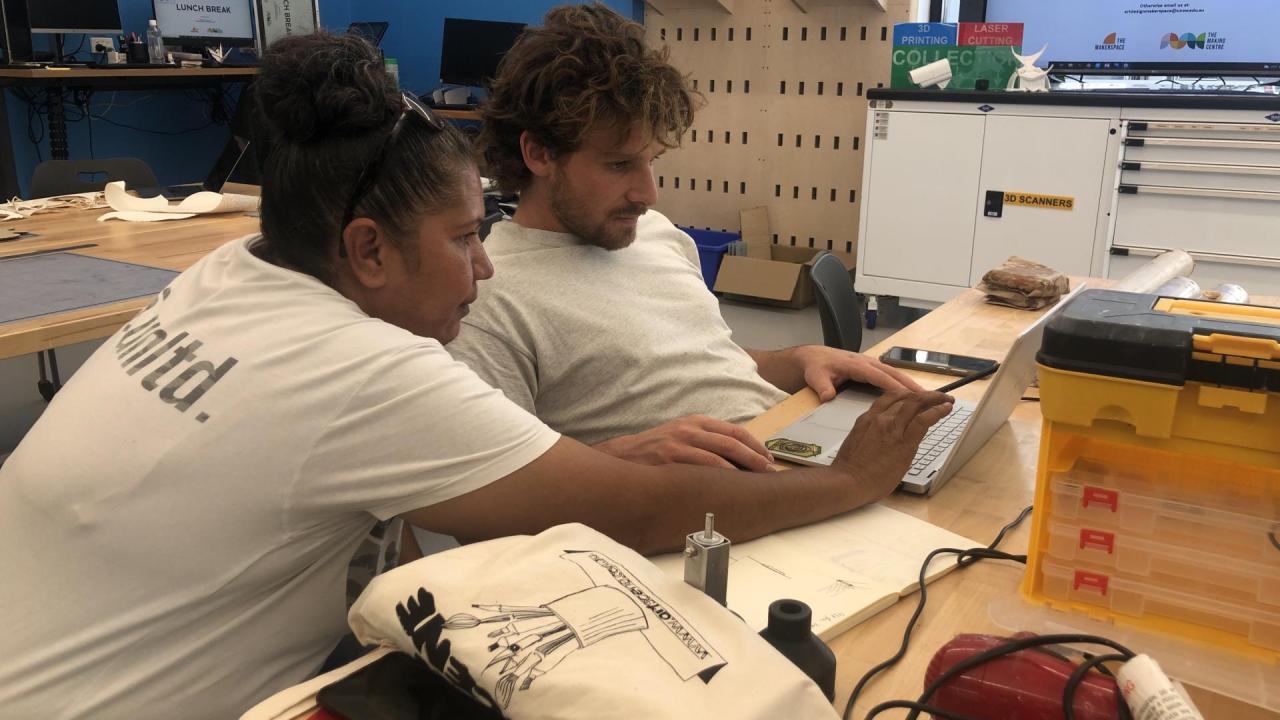Manta Pilti | Dry Sand
Tanya Singer + Trent Jansen
Manta Pilti (Dry Sand) has been designed by Tanya Singer and Trent Jansen to communicate the time critical catastrophic effects human induced climate change is inflicting on Country around Indulkana in remote South Australia.
For countless generations, Relational correlations between seasonal patterns of plants and animals have supported life in Indulkana, governing food collection, hunting, totemic relationships, and Law on Country. As the climate changes, these age-old relationships are thrown out of alignment.
Tanya’s references include the Parakeelya flower, a personally significant, seasonal, and small purple bloom, which was her mother’s favourite. It once blanketed the Indulkana hills and is now seen far less frequently. This once plentiful bloom is now only found in hard-to-spot patches far from the road, because of the increased heat, reduced rainfall and dry, sandy soil caused by climate change.
This fading bloom and the dry sand in which it grows are emblematic of hotter, dryer Country and tangible examples of ecosystem degradation in this region. They form the conceptual focus for the collaboration. Tanya and Trent have used the motif of cracking sand and Tanya’s interpretation of her mother’s favourite flower to inform the design of a furniture collection that can communicate this complex and troubling narrative.
Kutitji | Shield Chair
American cherry and American walnut
Kutitji Chair (Shield), designed by Errol Evans and Trent Jansen, results from Errol’s passion for carving large objects. Errol is a highly skilled wood (punu) artist, known for embodying sophisticated cultural narratives in large carved forms including spears, nyura, tjutinypa and shields. In carving these large objects, Errol usually begins with a chainsaw to rough out the form before using other mechanised and manual tools to painstakingly shape these highly refined artefacts.
This project began as a sketch exchange between Errol and Trent, a process that began with a drawing by Errol, incorporating traditional weapons and shields as components of a chair. Through several iterations of call and response, Errol and Trent refined this idea to mimic Errol’s beautifully refined, large shield forms, generating a simple chair structure that draws on the idiosyncratic lines and surfaces of these artefacts. Kutitji Chair (Shield) is an expression of Errol’s concerns about the impacts of climate change and the drying out of Country. He sees these shields as a defence against changing times.



